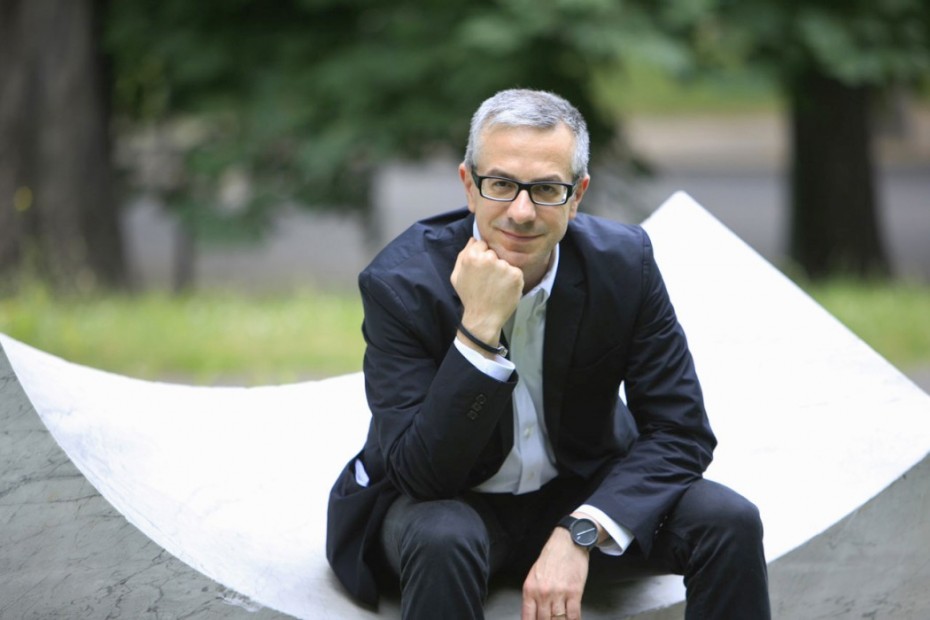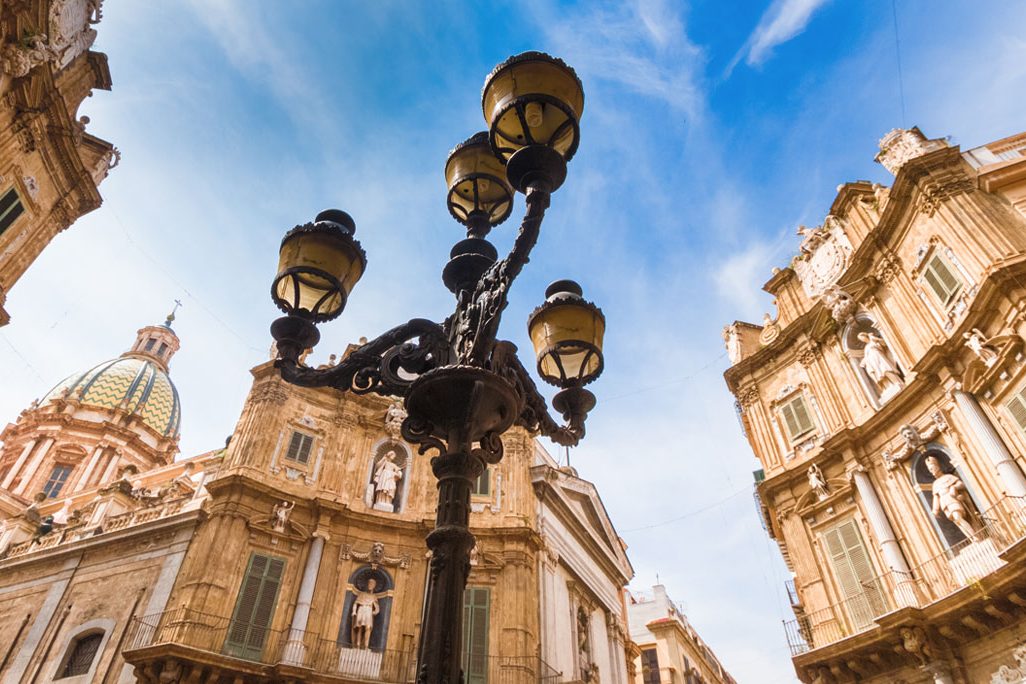The galleries of the Accademia Museum in Venice have recently been re-opened to the public, following a radical restoration by Venetian architect Tobia Scarpa, begun in 2001, which has doubled the exhibition space from 6,000 to 12,000 square metres.
This intervention has made the Accademia Museum the largest state museum in Italy, as pointed out on the opening day by Renata Codello, the coordinator of the whole project, and Massimo Cacciari, the former mayor of Venice who endorsed this highly demanding architectural endeavour.
Francesca Valente (FV): What was it like to follow the footsteps of your father, and restore one of the most important museums of Venice, if not of Italy, while taking care to integrate the existing facade and staircase by Palladio?
Tobia Scarpa (TS): Since 1945 the Accademia Museum has been a rather interesting space. The curator, Vittorio Moschini, had asked my father to renovate the spaces of the Accademia, which at that time had a rather modest nineteenth-century appearance. The Republic of Venice started in the ninth century and developed and prospered until 1798, when Napoleon handed it over to the Austrians. It was Napoleon, as a matter of fact, who started the so-called Academies, even though he tried to transfer many Italian masterpieces to France and destroy the Dukedom of Venice. The restoration of the Accademia Museum was very complex for many reasons. It is a project developed with the ambition of transforming the former obsolete structure into a functional museum restored according to international standards. I determined with my team of experts which issues we had to resolve, e.g., the lighting of the paintings, the air-conditioning system, and the accessibility of the museum to all.
My main concern was how to light the paintings properly, since this problem has unfortunately been overlooked in many museums. As far as the air-conditioning system is concerned, there is not much space for it in the old palazzos, so we placed it underground, under the courtyard, facing Palladio’s facade. While we were experimenting and proceeding with the restoration work, we realized the floor had risen by one meter because Venice is located in a big basin (the lagoon), and this creates a number of natural phenomena, among which are the high and low tides constantly alternating every six hours. The buildings this way breathe in and out, expand and contract, because the city is not rigid at all but very elastic. When the walls of the museum are impregnated with sea water, you are defeated from the start because the salt is trapped inside them. It took years of study to determine alternatives for extracting the water and treating the walls in order to restore them to their original aspect.
Renovation of the Accademia Museum in Venice
FV: The transformation of the new galleries of the Accademia Museum has required over twelve years of restoration. Can you highlight the most significant stages of this demanding project, which turned the Venetian museum into a space larger than the Uffizi Galleries in Florence?
TS: Indeed it has been a very complex project. From the very beginning of the restoration we have done a tremendous amount of work, especially if you think that we kept within the estimated budget, which is almost unthinkable in a bureaucratically-bound country such as Italy. It took quite some time but you have to take into consideration that for all these years the upper levels of the museum were open to the public. This placed constraints on the timetable for our work, but the restoration in no way interfered with the public’s enjoyment of the galleries. Among the many challenges we had to cope with was uniting all the halls of the building into a single museum itinerary.
FV: In what way does your intervention interact with the other spaces of the building, which include over eight centuries of history?
TS: The building of the Accademia is the expression of 813 years of history and is itself an exceptional protagonist of Venetian history. It is a monument to visit and love because each single part has something to tell you. It is with great joy that we tried to maintain the historical reading/imprint characteristics of the different parts of the complex, trying to reconcile an extraordinary journey back in time with the highly technological solutions we adopted. We were also enthusiastic about the opportunity of interacting with the works of Palladio and Canova within the project. Who wouldn’t be?
FV: How did your passion for architecture and design originate?
TS: Out of a desire for financial independence. I was an only child, I was 18, and the only things I knew were to draw and conceive a project. My first job was in Murano, in a glass factory. I was lucky to obtain Massimo Vignelli’s position at Venini’s, when he decided to move to Boston.
FV: The Pigreco chair marked the beginning of your career in design but also of your collaborations with the business world. How did you manage to reconcile your artistic objectives with the laws of industrial production?
TS: At the beginning I was hesitant to deal with the commercial furniture industry because I saw it as a monster interested only in money-making. I designed the Pigreco chair for an exam at the University of Venice, under Professor Franco Albini. He gave me the lowest mark, which infuriated my father. Paradoxically, it was with the Pigreco chair that I started my own line of furniture.
FV: And the triangular table, how was that developed?
TS: It started when my father got the Olivetti Prize. I was so happy to design an object, a prototype of a table to be used for an intimate party at home to celebrate this important honor.
I made two copies of the table, twice the size of the prototype; one got lost and the other was given as a wedding gift to the Venetian composer Luigi Nono.
The book recently published by Electa includes all the works I have designed.
The act of taking on a new project is very appealing to me because I am forced to explore what I do not yet know. I have conceived and designed the most disparate things, including a sailboat eighteen metres long with two engines, two rudders, and an adjustable keel for world championships. I had never designed anything like that before. I did it to challenge myself.
FV: Can you explain in detail your relationship with technology and how you used it in such projects as the Cloud and the Biagio lamps? I am personally very attracted to the Biagio lamp not only for the material you used but also for its shape. It is more a sculpture in marble than a simple lamp. I would like to know how you conceived and realized it.
TS: My father and I designed the Nuvola/Cloud together, but I did not always see eye to eye with him because it repeated some elements already developed by Castiglioni. But he wanted to have it made at all costs. It was produced by Flos. As far as the Biagio lamp is concerned, it all started with a collaboration between Licisco Magagnato, at that time Director of the Castelvecchio Museum in Verona, and my father. Knowing I was a designer, Magagnato asked me to do the layout and installation for an exhibition in Carrara, based on explorations of the possibilities offered by the local marble.
I was interested in experimenting with what machines could do with marble. In ancient times a long steel rod fixed to wheels was used to cut marble blocks; therefore, I thought we could use these same machines, but to shape rather than simply cut the marble. We took a block of marble, which, once cut, we shaped into a circular form, and made into an everyday object, a lamp in the shape of a shell, luminous and almost transparent.
This happened in 1968, the same year in which I conceived and created the lamp which I named Biagio in remembrance of Biagio Marin, a well-known poet from Veneto who studied in Vienna and wrote the most exquisite and profound poetry in Venetian dialect. I was inspired by the last line of his poem entitled “The timeless time of the sea” (1964) in which the space-time relationship can be grasped by perception itself, and darkness and light become one.






























